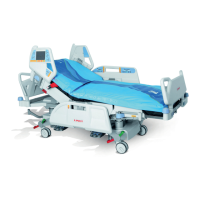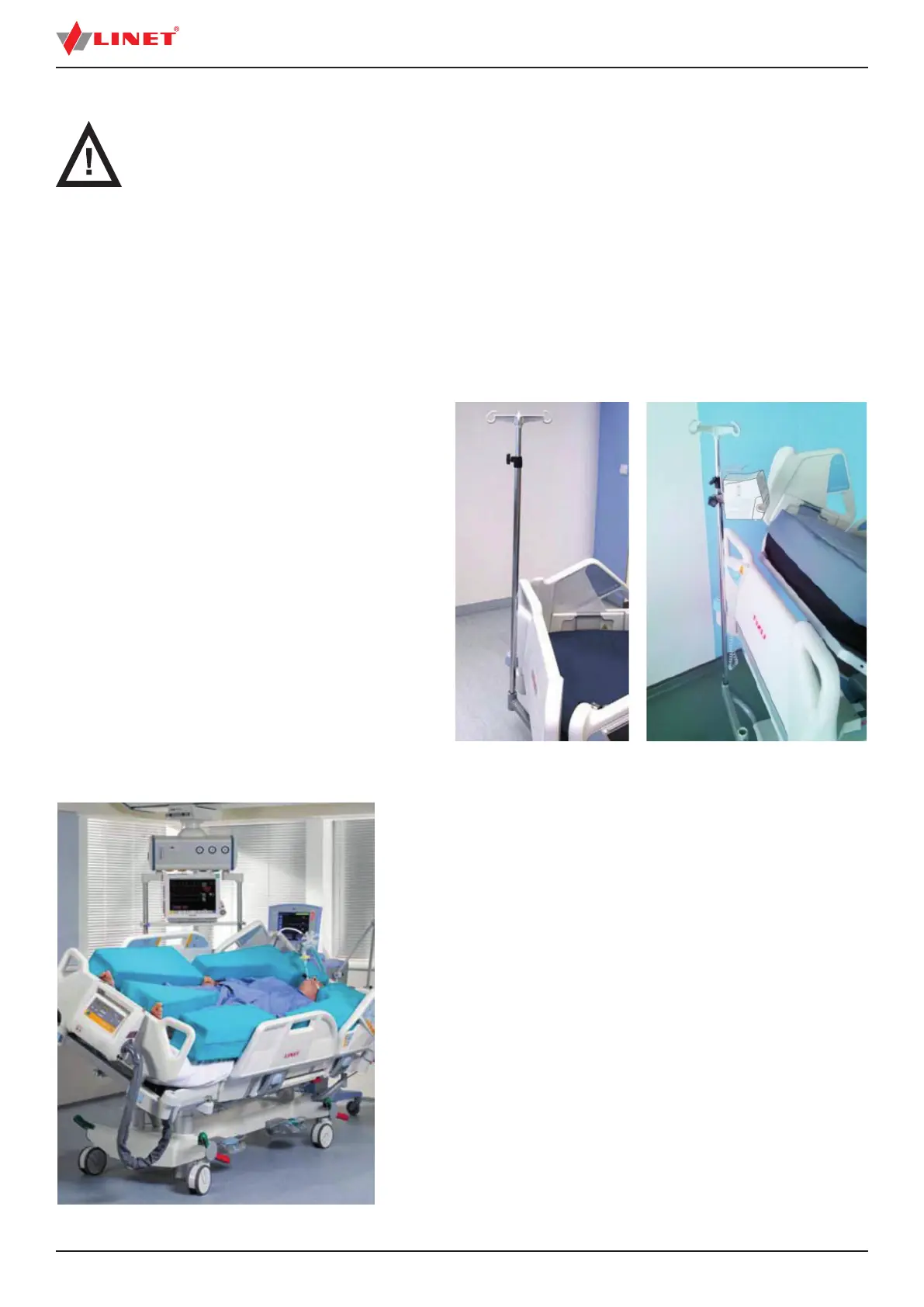D9U001MC0-0101_1666
18.2 Infusion Stands
WARNING!
Risk of injury due to use of incorrect accessories or because of incorrect use!
Infusion Stands must only be used for their intended use. Always read the instructions for use!
► Only mount an infusion pump to the lower (wider) telescopic section of an infusion stand above the head board/
foot board.
► Never mount an infusion pump to the upper (thiner) telescopic section of an infusion stand.
► Ensure the infusion pump will not collide with any movable parts of the bed (especially backrest part) or with the
patient. This must be veried during installation.
► Do not over tighten the infusion pump clamps during tment. Over tightening may damage the infusion stand.
► Infusion pump can be only used if the infusion stand is tted in the accessory holder socket in the head end on
the undercarriage of the bed.
► Do not use the infusion stand as driving/pushing device during the bed transport.
Infusion stands can be tted to the head and foot board by either tting into the IV/Infusion sockets mounted on the bed or using
alternative accesory holder socket in the head end on the undercarriage of the bed.
Fig. Infusion Stand Fig. Infusion Pump – Correct
Fitment
► Use exclusively infusion stands with 4 hooks for
hanging IV bags or baskets for intravenous solutions.
► Ensure the infusion stand individual hook 2kg maxi-
mum Safe Working Load is not exceeded.
► Ensure the infusion stand 20kg maximum Safe
Working Load is not exceeded.
► The total maximum loading of the IV/Infusion poles
must not exceed 20 Kg (44.1lbs).
18.3 Stabilising ALT Pads
The stabilising pads ensure a stable position of the patient during ALT in
order to prevent extubation or disconnection of IV lines or other equipment.
Stabilising pad set:
► 2 lateral arm pads
► 2 lateral leg pads
► 2 head pads
► 1 internal leg pad
► Always use LINET ® stabilising ALT pads for positioning patient
in centre of bed during ALT.
Fig. Stabilising Pads

